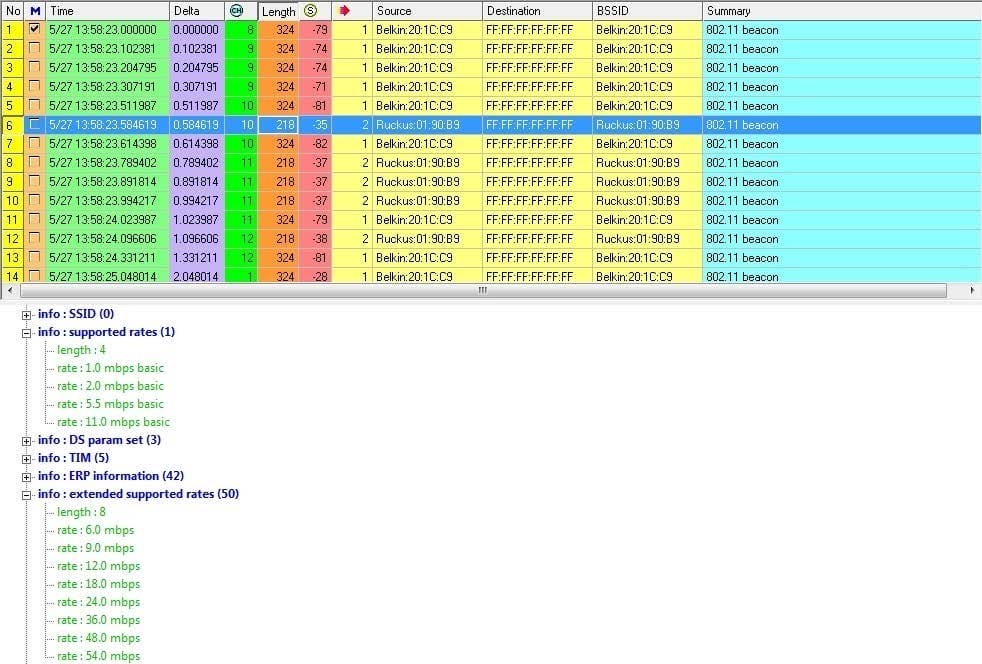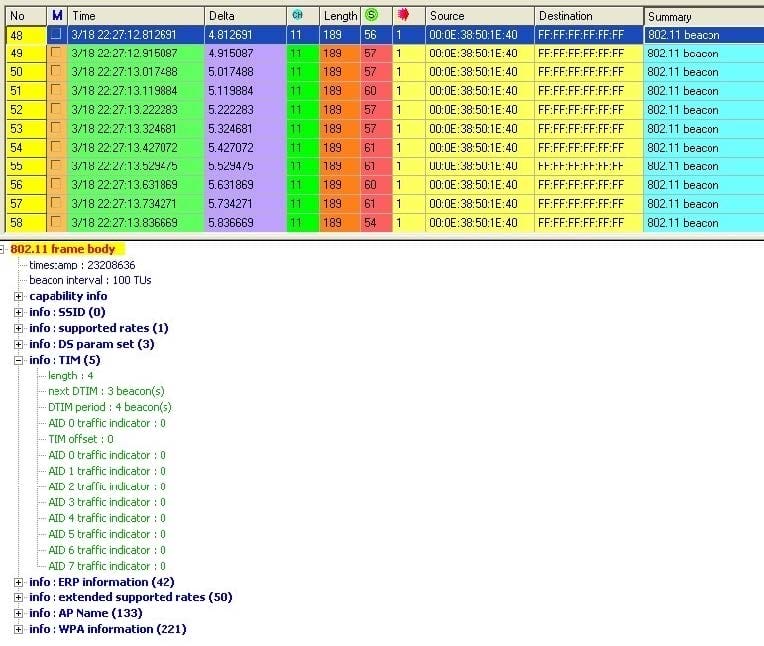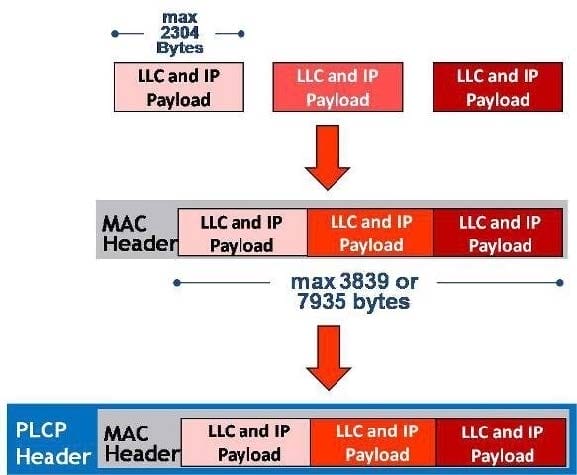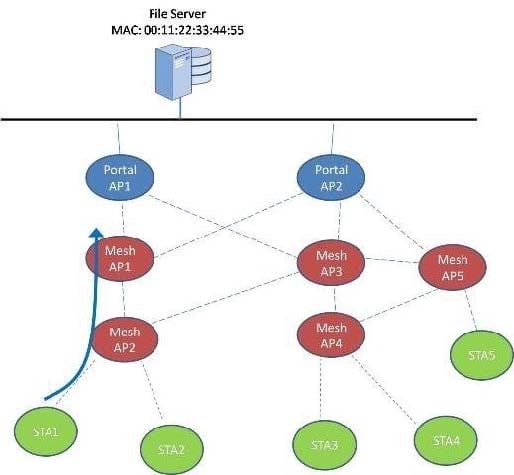Exam Details
Exam Code
:PW0-270Exam Name
:Certified Wireless Analysis ProfessionalCertification
:CWAP CertificationsVendor
:CWAPTotal Questions
:60 Q&AsLast Updated
:Jul 05, 2025
CWAP CWAP Certifications PW0-270 Questions & Answers
-
Question 51:
Which statement is true regarding the Association Identifier (AID) used in IEEE 802.11 WLANs?
A. The AID has a maximum value of 2048, and is used to uniquely identify a wireless client station associated with an access point.
B. The AID has a maximum value of 2007, and resides in the duration/ID field of a PS-Poll frame.
C. The client station is assigned an AID value in the 802.11 authentication response frame.
D. The AID field is present only in Beacons frames.
E. The AID is used by the access point in EDCA mode to reduce duplicate transmissions when sending multicasts.
-
Question 52:
In which 802.11 frames is the SSID present, provided the SSID is not removed through proprietary software configuration by an administrator? (Choose 3)
A. Association Request
B. Reassociation Request
C. Probe Response
D. Disassociation
E. Authentication
F. Association Response
-
Question 53:
In the frame decode shown, there are two sets of supported data rates. 1, 2, 5.5, and 11 Mbps are all shown as "basic" data rates, and 6, 9, 12, 18, 24, 36, 48, and 54 Mbps are shown simply as supported data rates.

What is true of "basic" data rates in this context?
A. The AP requires all client stations to support Basic rates in order to associate to its BSS.
B. The highest data rate set to Basic is automatically used to send broadcast traffic such as Beacon frames.
C. Basic rates are optional data rates for the BSS, often used for assuring connectivity for legacy stations.
D. Basic rates are only used for multicast traffic, and do not affect unicast traffic.
E. Basic rates are defined in an AP's service set to specify mandatory data rates for all retry frames.
-
Question 54:
Given the frame capture and the decode shown,

after which Beacons in the list shown (as indicated by the frame number in the leftmost column) would multicast traffic have been sent in this infrastructure BSS if multicast traffic had been queued for transmission at the access point? (Choose 2)
A. Framenumber 49
B. frame number 50
C. frame number 51
D. frame number 53
E. frame number 54
F. frame number 55
G. frame number 57
-
Question 55:
What HT PPDU format is shown in the exhibit?

A. HT-mixed format
B. HT-greenfield format
C. Non-HT format
D. Non-HT duplicate format
E. Dual Training Field format
F. ERP-OFDM format
-
Question 56:
What is the purpose of a PHY preamble?
A. It provides the receiver(s) with an opportunity for RF channel synchronization prior to the start of the PLCP header.
B. It communicates important information about the PSDU's length, rate, and upper layer protocol- related parameters.
C. It provides a cyclic redundancy check (CRC) for the receiving station to validate that the PLCP header was received correctly.
D. It indicates to the PHY the modulation that shall be used for transmission (and reception) of the PSDU.
-
Question 57:
When a 5 GHz HT station in a 40 MHz BSS desires to protect a 40 MHz transmission from an OFDM station using an RTS/CTS or CTS-to-Self exchange, what frame format is used for the RTS and/or CTS frames?
A. HT-mixed format
B. HT-greenfield format
C. Dual-CTS
D. Non-HT Duplicate
E. Phased Coexistence PPDU
-
Question 58:
What IEEE 802.11 technology is illustrated by the exhibit?

A. Fragmentation
B. TCP Fragment Bursting
C. A-MSDU
D. A-MPDU
E. U-APSD
F. Jumbo frames
-
Question 59:
Which statements are true regarding Beacons from an AP in an HT infrastructure BSS that is configured with multiple WLAN profiles? (Choose 3)
A. Beacons can be disabled for security purposes.
B. The BSSID and Source Address are always the same.
C. The Destination Address is always FF:FF:FF:FF:FF:FF.
D. The Receiver address and the BSSID are always the same.
E. When the SSID is "hidden," the ESS subfield of the Capability Information field distinguishes one BSS from another.
F. All Beacons generated by APs contain a TIM information element.
G. The Beacon interval must be the same for all WLANs (SSIDs) supported by a single AP
-
Question 60:
Using the exhibit as a reference, answer the following.

STA1 sent a data frame to Mesh AP2 destined for a local file server on the same subnet with MAC address 00:11:22:33:44:55. Mesh AP2's mesh forwarding algorithm determined that the frame should be forwarded through Mesh AP1.
In the frame sent from Mesh AP2 to Mesh AP1, what is true of the contents of the MAC header? (Choose 3)
A. SA = Mesh AP2's MAC Address
B. RA = Mesh AP1's MAC Address
C. TA = STA1's MAC Address
D. DA = 00:11:22:33:44:55
E. To DS = 0
F. From DS = 1
Related Exams:
Tips on How to Prepare for the Exams
Nowadays, the certification exams become more and more important and required by more and more enterprises when applying for a job. But how to prepare for the exam effectively? How to prepare for the exam in a short time with less efforts? How to get a ideal result and how to find the most reliable resources? Here on Vcedump.com, you will find all the answers. Vcedump.com provide not only CWAP exam questions, answers and explanations but also complete assistance on your exam preparation and certification application. If you are confused on your PW0-270 exam preparations and CWAP certification application, do not hesitate to visit our Vcedump.com to find your solutions here.